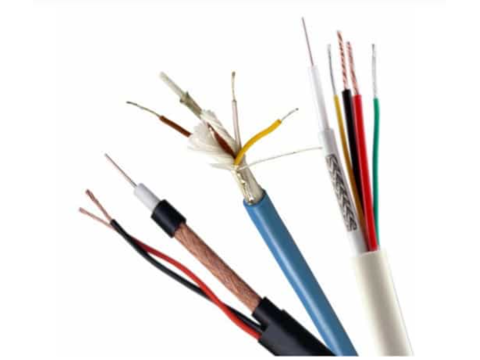Cable Types and Installation for Surveillance Systems
For Analog and Digital (IP) Systems
Choosing the right cable for surveillance systems depends on the camera type (analog or IP) and the specific system requirements. Wireless cameras, of course, do not require cabling.
Types of Cables for Surveillance Systems:
- Coaxial Cable
- Twisted Pair (UTP, FTP, STP)
- Field Telephone Cable (P-274)
While the last option might seem unusual in this context, it has unique advantages in certain scenarios, explained below.
Cable Selection Criteria
Camera Type and System Configuration
- Analog or IP Camera: Determines the cable type.
- Distance Between Components:
- IP cameras with twisted pair: Maximum 100 meters (extendable with advanced technologies).
- Analog cameras with coaxial cable: 50–100 meters, depending on quality and environmental factors.
Long-Distance Connections
- For analog systems, twisted pair cables can extend the distance to 1 km or more. In such cases, P-274 cable is optimal due to its high resistance to interference, thanks to its 20 twists per meter design.
Cables for Analog Surveillance Systems
Coaxial Cable
- A traditional choice, featuring a central conductor surrounded by shielding.
- Use a cable with 75-ohm impedance (e.g., RG or RK series).
Key Quality Indicators:
- Larger diameter reduces signal loss over long distances.
- Copper conductors and shielding outperform aluminum.
- Dense shielding provides better interference protection.
Power Supply for Analog Cameras
- Separate power cables (e.g., ШВВП) or combined coaxial cables with integrated power lines are often used.
- A nearby power block simplifies installation and reduces cable length.
Modern Analog Standards
- AHD, TVI, CVI: These high-definition analog standards require similar cabling considerations as traditional analog systems.
Cables for IP Surveillance Systems
Twisted Pair Cables
- Choose Category 5 (Cat5) or higher for speeds up to 100 Mbps.
- Shielding types include:
- UTP: Unshielded.
- FTP: Foil-shielded.
- STP: Shielded twisted pair.
- S/FTP: Highest protection with braided shielding.
Power Options for IP Cameras:
- Separate 12V or 24V power lines.
- Power over Ethernet (PoE): Combines power and data transmission in one cable, reducing installation complexity.
Important Notes for Long Runs:
- Using unused twisted pair conductors for power can result in voltage drops over long distances. PoE mitigates this by using 48V, reducing current flow and power loss.
Cable Installation Considerations
Indoor vs. Outdoor Installation
Outdoor cables must withstand:
- UV exposure.
- Moisture and temperature variations.
Use color-coded insulation:
- Black: Outdoor-rated with UV protection.
- Gray: Indoor use.
- Orange: Flame-retardant.
Installation Methods:
- Protective Conduits: Gofroshlang or similar materials protect against UV and mechanical damage.
- Cable Trays and Channels: Ideal for neat installations inside buildings.
- Direct Mounting: Suitable for low-risk areas (e.g., behind walls or ceilings).
Cost of Installation
- Varies by method and complexity. For example:
- Conduit installations require costs for conduit placement and cable pulling.
- Direct mounting has simpler cost structures but depends on the object’s specifics.
- Varies by method and complexity. For example:
By understanding cable types, installation methods, and environmental considerations, you can optimize surveillance system performance while managing costs effectively.

